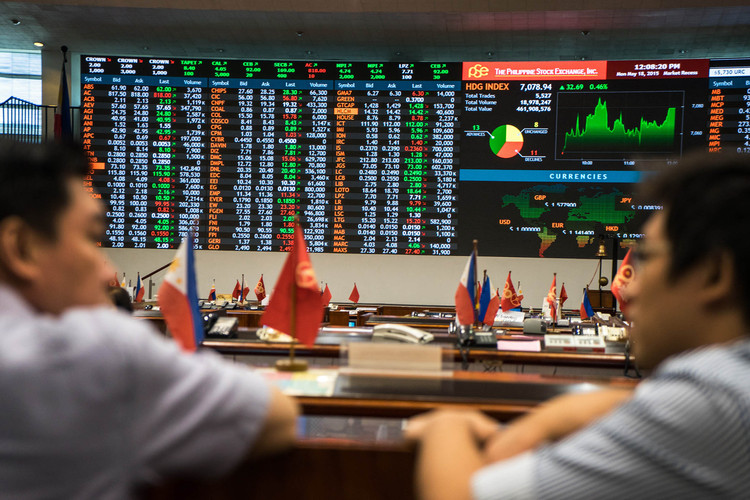Mainland China stocks are leading the way higher today after China’s Inflation data showed a still very benign inflation landscape. Inflation YoY in April climbed to 2.10% (1.8% exp), and Inflation MoM for April increased by 0.40% (0.20% expected). PPI also eased to 8.0% from 8.30% last month. In the context of the inflation landscape elsewhere in the world, China is in a very sweet spot at the moment, markets today are pricing that it gives China’s Government room to unleash some juicy stimulus GFC-style.
Of course, what the market wants, and what the market gets are often two different things, especially where the Chinese Government are concerned. Premier Li continues to make noises about the potential for broader economic support, but with China still hell-bent on covid-zero, even if it crushes the economy, and the PBOC showing no signs of loosening the liquidity tap, along with the continuing rhetoric of “targeted stimulus,” I’m not seeing any signs, yet that China has moved away from its deleveraging stance. Even opening the taps now would be of limited impact if workers can’t leave lockdown to build roads or go back to factories.
That sort of mixed messaging doesn’t do markets any favours, but China isn’t the only one guilty of it. The rent-a-crowd of daily Fed speakers are also a bit “mixed.” We saw some big ranges in stocks and bonds overnight as increasingly frantic markets chase their tails in the vice grip of recessions and Fed hiking/inflation. The Fed’s Loretta Mester, on Bloomberg television, didn’t help things by saying “we don’t rule out 75 forever,” meaning 75bps hikes could happen. US longer-dated yields fell quite heavily overnight as the street tentatively priced in “peak-hiking,” but the more rate-sensitive 2-year was unchanged. This kind of mixed messaging isn’t at all helpful and may be why equities gave back some gains overnight.
The US National Federation of Independent Business (NFIB) survey overnight suggests US inflation isn’t going to fall precipitously soon. The price change and 3-month pricing plan sub-indices were as robust as ever, suggesting cost increases, and the ability to pass them on to consumers is as robust as ever. That isn’t stopping the US Federal Government, now looking nervously at mid-terms in November, from trying to do something about inflation as diesel and gasoline prices soar. President Biden has hinted a temporary suspension of Federal fuel taxes could be on the cards, and he is actively exploring removing the Trump-era tariffs on Chinese goods to push the CPI lower. That has given US equity futures a leg up today. However, even if we may be nearing the top of inflation, that doesn’t mean it will suddenly drop; it could just as easily move sideways at the levels globally for some time.
One risk factor constantly being ignored when it shouldn’t be, is the Ukraine war. Ukraine has announced the suspension of west-bound gas exports through a compressor hub, ostensibly because Russia is siphoning the gas to its vassals in Donetsk. It is trying to redirect flows to another interchange that remains under Ukrainian control. Naturally, Gazprom disagrees, but the threat of disruption to European gas supplies appears to be pushing oil sharply higher in Asia today, helped along by stimulus hopes from China. All bets are off on inflation if Russian gas gets cut to Europe.
New Zealand has announced today that it will fully reopen borders in about six years, I mean weeks’ time on July 1st. The New Zealand Dollar is 0.25% higher, but that is due to a modest risk-sentiment recovery. Like everything to do with the Covid recovery by the government and the Reserve Blank, it is too little, too late. AUD/NZD above 1.1000 might encourage some Australian skiers to venture across the Tasman Sea for the winter season, but they’ll be shocked at how many New Zealand Pesos will be required to buy anything. New Zealand remains my no.1 pick for a hard landing later this year among developed countries unless Russian gas gets turned off to Europe.
Another central bank on a growing list having to make least-worst choices is Bank Negara Malaysia today. The Malaysian Ringgit has performed terribly these past two months, showing none of the resource-based support that the Indonesian Rupiah had achieved. In that respect, the Ringgit appears to have become a China-proxy like the Australian Dollar. Headline inflation is still quite manageable at 2.20%, but food price inflation is heading above 4.0%. That reduces the pressure on BNM to hike rates today, but like the RBI last week, and Indonesia next month, they will likely have to move soon unless they want to start burning through foreign reserves to defend the currency. Malaysia encapsulates the least-worst choices facing many an Asian central bank as 2022 goes on, especially as China’s PBOC seems quite happy to allow the Yuan to continue depreciating in a back-door stimulus for exporters.
The evening’s highlight will be the US Inflation data. April Core Inflation YOY is expected to ease from 6.50% to 6.0%, with Headline Inflation YoY expected to ease to a still-eye-watering 8.10%. Expect a binary outcome from the data. Lower prints will see peak-Fed hiking priced in, good for equities and bonds, bad for the US Dollar. Stubbornly high prints see more Fed tightening. Bad for equities and bonds, but good for the US Dollar.
Keep an eye on official US Crude Inventory data as well, particularly the refined gasoline and distillates categories. The US has plenty of oil but seems to be struggling to refine it into diesel, like the rest of the world. We could see a sharp move higher by WTI if the sub-category’s inventories fall sharply, and it will be another headwind for equities as well.
Finally, cryptos have a volatile session, Bitcoin had an impressive rally intraday before losing much of those gains to finish 3.0% higher at $31,000.00. Bitcoin failed just ahead of resistance at $33,000.00 overnight, a bearish technical development. Failure of $30,000.00 likely signals the next wave down for Bitcoin which should target $17,000.00 in the weeks ahead. (or days) I am watching the (un)stable coin situation, with 1 to 1 to the US Dollar pegs breaking in the space. I have warned before that so-called stable coins made me nervous due to the opacity of do they actually have one US Dollar in reserves for every (un)stable coin issued. Turmoil here could result in more downward pressure in the cryptocurrency space.
Asian equities are mixed.
It was an inconclusive session overnight in New York as recession fears and lower oil prices seemed to weigh on value stocks while the buy-the-dip gnomes piled back into growth as longer-dated US yields headed lower. The S&P 500 edged 0.25% higher, while the Nasdaq gained 0.98%, but the Dow Jones ended the session 0.26% lower. In Asia, that has continued with Nasdaq futures rising 0.75%, S&P 500 futures rising 0.35%, and Dow futures edging 0.23% higher.
Part of the rally in US futures could be explained by China’s stock market outperformance today. With inflation data benign, China markets have quickly moved to price in room for heavier China stimulus going forward. That has seen the Shanghai Composite jump higher by 1.63%, the CSI 300 rally by 2.04%, and the Hang Seng gain 1.62%.
Elsewhere in the Asia-Pacific, the performance is more mixed as China recession fears and Fed rate hikes continue to buffet local markets. The more Nasdaq aligned Nikkei 225 has risen by just 0.12%, but the Kospi has slipped 0.20% lower, with Taipei unchanged. Singapore is down by 0.60%, with Kuala Lumpur edging 0.15% higher ahead of the BNM policy decision. Jakarta is 0.60% higher, while Bangkok has lost 0.50% and Manila is 0.70% lower. In Australia, the All Ordinaries have slipped by 0.12%, and the ASX 200 has lost 0.28%. Overall, the picture is one of the markets left to their own devices after an inconclusive US session and a slow headline reel in Asia.
European markets are likely to take fright at potential trans-Ukraine natural gas disruptions and track lower initially. US markets will continue to be buffeted by the Fed speaker rent-a-crowd, with US inflation data set to define the session.
Currency markets consolidate.
Currency markets were content to leave the equity FOMO gnomes to chase their tails overnight, while currencies traded sideways ahead of US inflation data tonight. The dollar index is almost unchanged over the past 24 hours at 103.80 this morning. A daily close above 104.00 will signal rapid gains to 105.00 and in the bigger picture, the technical picture still says a multi-month rally to above 120.00 is possible. Support lies at 103.50 and 102.50.
Likewise, EUR/USD and GBP/USD are almost unchanged over the past 24 hours, trading at 1.540 and 1.2335 today. A move above 1.0600 or 1.2400 could see a further short squeeze worth another 100 points, but the overall technical picture remains very bearish. Only a sharp fall in US inflation tonight changes the picture temporarily.
USD/JPY is trading sideways at 130.35 today with the price action most notable overnight for the fact that USD/JPY did not fall with longer-dated yields. In the short end, 2-years were almost unchanged and that is perhaps where we should look for directional signals in the near term. Overall, the US/Japan rate differential and technical picture suggest further USD/JPY appreciation is a matter of when, and not if.
AUD/USD and NZD/USD have consolidated at the bottom of their ranges these past two days. AUD/USD is at 0.6960 today, with NZD/USD at 0.6305. Of the two, the NZD/USD looks most vulnerable to further losses, but both are being buffeted as risk-sentiment indicators. Failure of 0.7300 or 0.6250 will signal another move lower is beginning.
The Asian currency space was quiet overnight, prices moving sideways. Much the same price action has been seen in Asia today and it appears that the US inflation data tonight will be the next directional spark. Lower inflation should be Asia FX supportive, while higher inflation will be negative for Asian currencies. The Malaysian Ringgit could see some volatility this afternoon over the BNM policy decision. It could move sharply higher if BNM surprises with a hike.
Oil rallies in Asia.
Oil prices continued falling overnight as China slowdown nerves and increasingly, US recession fears weighed on prices. In Asia, we have seen a sharp bounce as energy markets price in most China stimulus after benign inflation data, with Ukraine gas disruption likely having a flow-through impact on oil prices.
Overnight, Brent crude finished 3.55% lower at $101.50, and WTI closed 3.45% lower at $99.00 a barrel. Prices have jumped in Asia with Brent crude rallying by 3.30% to $104.80, and WTI leaping 3.10% higher to $102.05 a barrel. I suspect the gas disruptions in Ukraine are having a steadily increasing impact, as hopes of more China stimulus alone would not just the bounce we have seen today. As a result, I see more upside to oil prices in Europe this afternoon. US Natural Gas has moved 2.50% higher today, after rallying 4.0% higher overnight.
Brent crude has formed a triple top at $114.75 a barrel, which will be a formidable barrier in the near term. It has support at $101.50 a barrel. I am sticking to my broader $100.00 to $120.00 a barrel wider range ahead for now. WTI has resistance at $111.50 with support at $98.50 a barrel. Once again, I remain comfortable with a $95.00 to $115.00 a barrel outlook in the medium term.
Gold looks shaky.
Gold’s price action can only be described as negative overnight. Despite lower US yields and a sideways US Dollar, gold fell by 0.84% to $1838.50 an ounce, taking out support at $1850.00. In Asia, gold is unmoved from the New York close with little interest from regional players ahead of US inflation data.
Gold is now just above the triangle apex at $1835.00, the breakout of which in early February, signalled the gold rally to $2060.00 an ounce. A daily close under $1835.00 would be an ominous technical development although it must be said, gold’s recent price action suggested downside risks were in play.
Failure of $1835.00 sets up a test of support at $1820.00 and then potentially $1780.00 an ounce. Failure of the latter suggests a deeper correction to $1700.00. Gold has resistance at $1850.00 and $1882.00 an ounce, its 100-day moving average. I foresee more whipsaw trading ranges in the days ahead.















